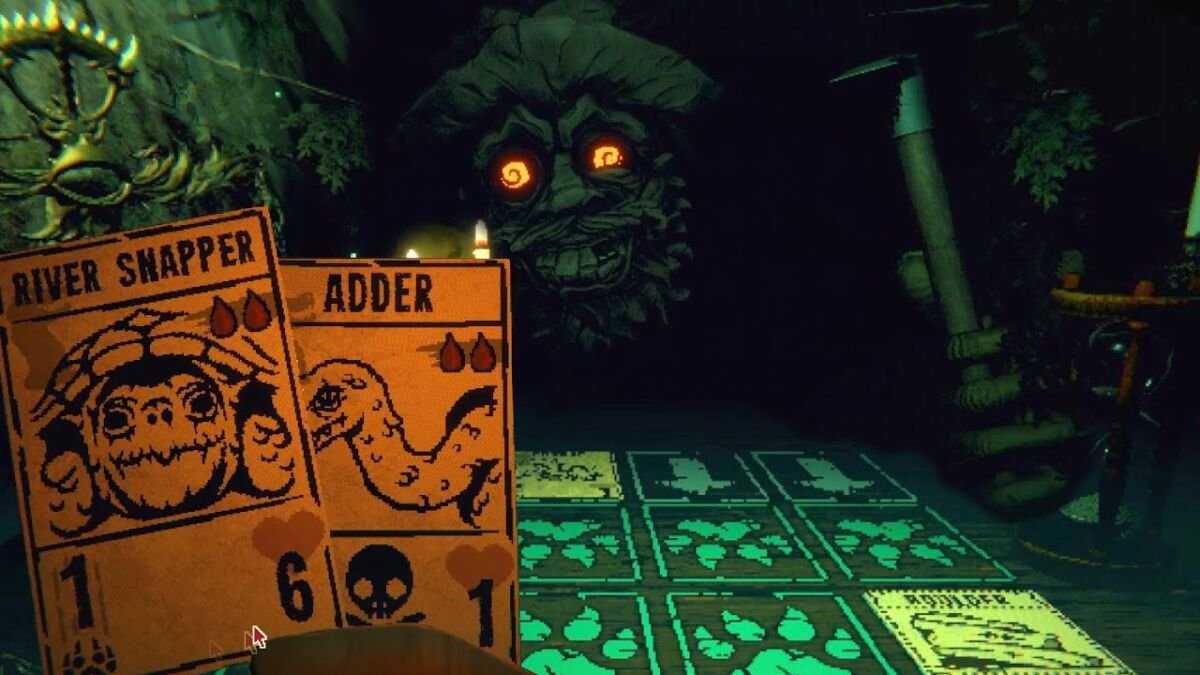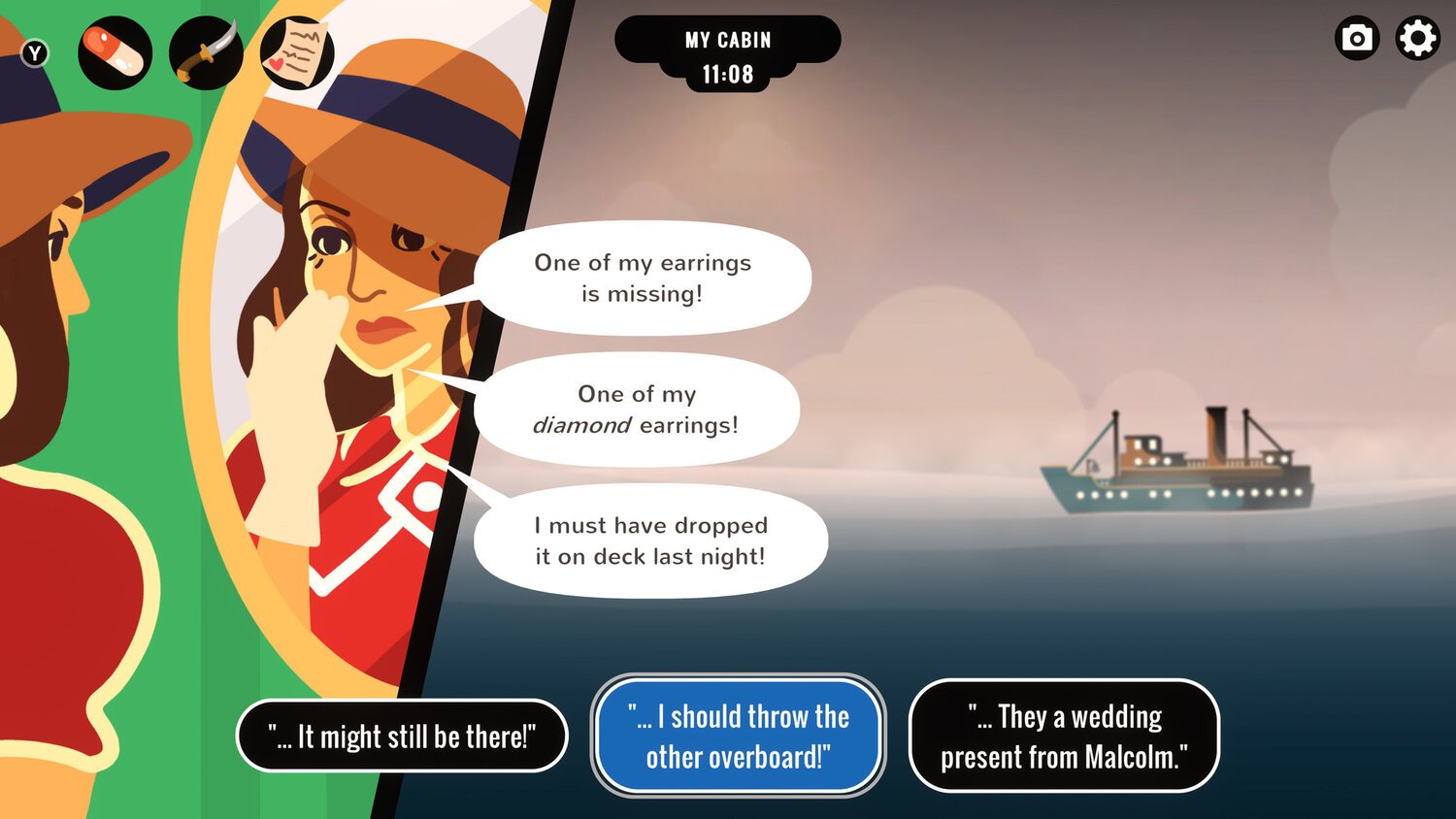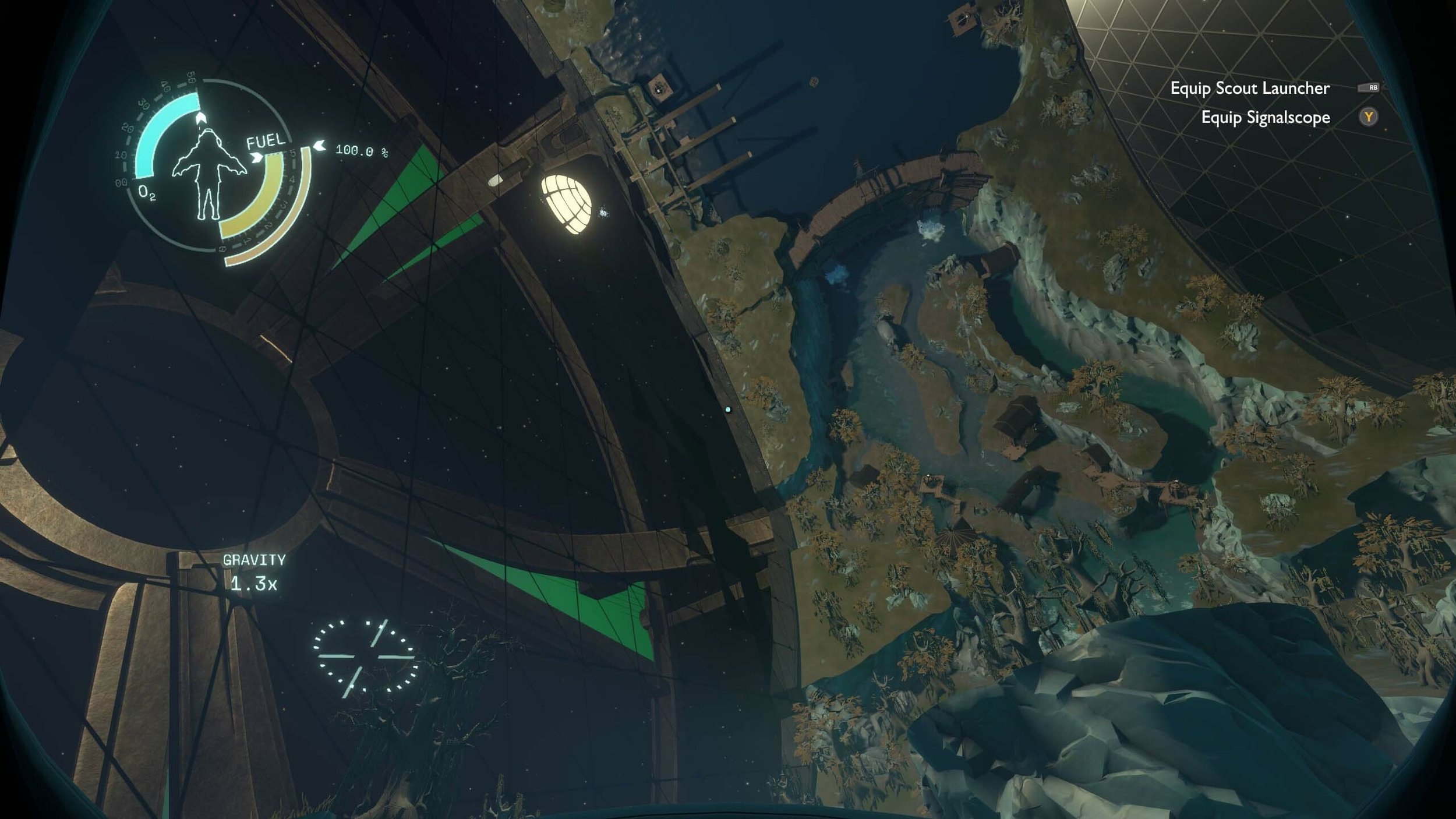Hello! Hi! You’re here and so am I! What a miracle, truly.
It’s been pretty quiet on the Gentle Gamers front for about, uh, two years. Truthfully, I’ve had some trouble stringing words together for this past bit of time. But even as my will to write went into quiet hibernation, I was still playing games: quiet games, games that turned off the louder portions of my brain, games that were lovely and just what I needed.
I can feel the writing gears slowly move back into motion as we step into 2022, so I’d like to take a moment to help them along by saying: Hi. I love you. I hope you’re well. Here are some games I liked this past year. Maybe you’ll like them too.
Wildermyth
Most games have a story in mind for the player to follow. Even in “open world” games like Breath of the Wild, I might make a million diversions, but in the end, I will always be meant to face Calamity Ganon and save Zelda.
Wildermyth does something that puts a huge amount of trust in the player: inspired by tabletop games like Dungeons & Dragons, it invites a collaborative approach to creating a story, one made between the game and the player. Whereas most tabletop games invite beautiful chaos through the inclusion of other players, Widlermyth builds most of its systems by randomly generating large aspects of the story.
The player begins the game with a randomly-generated group of adventurers. From there, they are put on a randomly-generated map, filled with possible battle encounters with fantasy-world enemies. As the party explores the map, randomly-generated story beats pop up, inviting the player to make decisions on how their characters react to the environment. After battles, the party receives randomly-generated stat-boosting equipment, which they can add to their little sprites, turning their generic outfits into bespoke ensembles.
Each bit of Widlermyth is deceptively simple. But when all these random bits and bobs come together, it makes for a surprisingly personal story.
By the end of my first campaign, my adventurers had changed drastically: one had raven wings from a pact with an old god; one had lost an eye trying to help another; all were grey-haired (as the adventurers age during their journey); one’s child fought along side them in the final boss battle. As I bid farewell to one group and went into the next campaign, a couple of my old crew popped up in my new adventure. I was thrilled to welcome them back.
The whole thing felt like a world emerging out of many small parts, all moving together in tandem. In a time when most chaos feels big and scary, Wildermyth was a reminder of the joy that chaos can also bring.
Unpacking
I have not met a single person that enjoys moving. The stress of putting one’s material life into boxes and moving them to a new place is often stressful, no matter how many friends you bribe with pizza and beer.
Unpacking is a puzzle game about, uh, unpacking. The game follows an unnamed protagonist as they unpack after a number of big life changes: moving to a new house as a kid, going to college, moving in with a partner, etc. The “puzzle” element of Unpacking involves trying to find appropriate homes for each item. The game only allows you to progress when items are placed in generally correct spots (e.g. clothes must go in closets). With limited amounts of space, there is some light strategizing about how best to organize the space.
The protagonist of Unpacking is never seen or heard; the player only gets to know them through the objects that they pull out of their moving boxes. From this, a surprisingly captivating and tender story emerges. Certain objects are brought across multiple moves. Objects are picked up from old roommates and held on to, even as the roommates become former roommates. The part that really got me, though, was when I was unpacking boxes when the protagonist moves in with their boyfriend.
Across multiple moves, the protagonist had packed a framed certificate, showing some sort of achievement. I had dutifully placed it on the wall in each new move. However, as I looked around the boyfriend’s apartment, there wasn’t any wall space. There were lots of concert posters and framed photos, but no room for this one item. I spent a good deal of time trying to find space, until finally resorting to storing it under the bed. I was surprised how genuinely sad I felt.
Most games involve getting to know a space. Unpacking looks at what what our spaces say about us.
Dorfromantik
Dorfromantik is both 1) intensely fun to say (“Dorf! Dorfromantik!”) and 2) the mind-numbing relaxation I needed this year. Here’s what I wrote about it earlier this year:
One of my earliest gaming memories is playing Age of Empires with my little brother, and it really set the tone for what I wanted from video games. Being predisposed towards anxiety, there was something reassuring about playing a game where I didn’t control a single person, but where I was in charge of the environment. Early Maxis games like SimCity, SimPark, and SimAnt scratched the same itch. Even though these games had goals and challenges, I found them relaxing. There was something about seeing their digital worlds grow and change from a bird’s eye view that just settled my mind.
Dorfromantik — a game that describes itself as a “peaceful building strategy and puzzle game” — really focuses in on the relaxation, while keeping it just challenging enough to be captivating. The player is given a stack of hexagonal tokens with different landscape features: trees, houses, railroads, rivers, and farmland. Players can earn points and, more importantly, get more tiles in their stack by following certain challenge prompts (e.g. creating a river of a certain tile length, or by creating a village of an exact number of houses). When the player runs out of tiles, the game ends.
It’s really the design of the game that shines: as the land grows, subtle changes occur. Forests change from green to fall-colored on different ends of the map. The houses in the villages give off little puffs of smoke. Boats and trains travel their ever-growing paths. Little geese fly across the landscape in a soft V. It’s like looking down at the world from an airplane, which imbues the whole experience with an air of calm detachment. There are no troubles or problems to solve, just little hexagons to rotate and place, building a world out of thin air.
Inscryption
Going off of aesthetics alone, Inscryption really isn’t my normal cup of tea. It’s marketed as a combination of deck-builder and puzzle-escape-room, with lots of light horror elements stuck in. Namely: You’re in a room! Trapped by someone for reasons you don’t know! All you can see are their swirling orange eyes! To track your points during a game, there’s a scale with gold teeth on it! If you need to tip the balance in your favor, you can tear out one of your teeth!
But I was intrigued. The game was made by the same person who did Pony Island, a game that was seemingly about a pony on an island, but which unraveled into a meta-contextual fight against the devil. I has heard rumblings that Inscryption took a sharp left turn as well, and my curiosity won out.
And I’m so glad it did! I didn’t love the game as much as some others did (it won Polygon’s Game of the Year title, handily), but I did find it pretty captivating. It’s a game best gone into blind, so I won’t say too much here. What I will say is that it doesn’t feel like a one-trick pony. In fact, I thought that the sharp-left-turn was one of the weaker parts of the game. The core game itself — a strategy card game with new rules thrown in at odd intervals — actually required a fair bit of thought and strategy. For that reason alone, I wanted to keep playing.
The fact that there was a whole story that just kept unfolding and unfolding and unfolding? Well, that was icing on top of an already pretty delicious cake.
Overboard!
Another one I wrote about over the summer, and I still love it! Here’s what I said before:
Sure, a murder mystery is a good time. But what about a murder mystery where there is no doubt that you are the murderer?
Overboard! is a snappy and charming little game where there is no doubt about who is trouble; the game starts with the player’s character pushing their husband over the railing of a boat while they’re out at sea. From there, it’s up to the player to move around the ship and avert suspicion away from themselves and to literally anyone else. At some point, their late husband’s disappearance will become apparent to other people on the ship, and a Poirot-style living-room “whodunnit” sequence will determine whether or not the player actually got away with murder.
No matter if they get off or not, the game will loop, and the player will have another chance to do a run. Overboard! does a great job of keeping things moving on future loops. The game remembers what choices the player made in the previous run, and so there’s an option to fast-forward sequences using the same answers, if you choose. Also, little side quests come up as smaller mysteries arise (what is the captain trying to hide? why did the often-drunk high society lady say the ship is sinking?). It can be hard to make a repeated story feel fresh and fun, but OverboardI manages to do just that, all while teasing that maybe you can get away with murder better, faster, more slyly next time.
Outer Wilds: Echoes of the Eye
OK, let me get this out of the way: I didn’t finish Echoes of the Eye.
Echoes of the Eye is a new added adventure to Outer Wilds, which is, perhaps, my favorite game of all time. Outer Wilds is a perfectly contained adventure: you play as a character, stuck in a time loop. The sun explodes every 22 minutes, resetting the world, and you’re the only one who knows. It’s up to the player to explore the game’s solar system and figure out what’s going on. There’s not a hair that’s out of place in the original game. When the mystery is revealed, everything falls into place perfectly, making a supremely satisfying (and incredibly moving) ending. So, when Echoes of the Eye was announced, I saw a number of game reviewers wonder how the Mobius Digital team could add an expansion to this perfectly crafted world.
Like Inscryption, both Outer Wilds and Echoes of the Eye are best gone into blind. Suffice it to say that the expansion feels perfectly slotted in, creating a new space to explore that is both entirely self-sufficient from AND YET deeply connected to the base game.
But, like I said, I didn’t finish it. Because it was too scary for me.
I got about halfway through before I decided that I was good. The latter half of the game becomes a pseudo-horror game, having to avoid things creeping in the dark. I hate navigating dark games. I hate survival horror. And I hate when messing up in a game means being punted to the very beginning of the scary section. Echoes of the Eye does all three, yet it’s still a game I can’t stop thinking about.
Thought I didn’t finish the game myself, I did watch a playthrough. Like the original game, the ending of Echoes of the Eye shows the entire exercise to be a beautiful meditation on our relationship to the unknown. If Outer Wilds was about the joy of exploration, Echoes of the Eye is about fear, and what happens when we succumb to it. Though it’s not something I was ready to face on my own, I am so thankful to have a team as thoughtful as Mobius Digital reaching out to me in the dark.
New Pokémon Snap
When I was little, I loved going to Blockbuster because they had an arcade console where I could play Pokémon Snap. Without an N64 at home, the Blockbuster demo version was the best I could hope for. The game itself wasn’t much to write home about: as the player, you follow an on-the-rails path through a world of Pokémon, taking pictures of them in their natural habitat and enticing them to interact by throwing apples their way.
I played the same route, over and over. I knew it backwards and forwards. It was elusive. It was coveted. And when it disappeared and was replaced with a new demo game, I was heartbroken.
Cut to: me — an adult woman — pre-ordering New Pokémon Snap for the Switch I bought with my own money. I played it on day 1 and can safety say that it is so stupid. It is slow-paced and repetitive and is utterly confounding to play.
I love it so much.
Like a little rat hitting a button to get a pellet over and over again, New Pokémon Snap delivered serotonin straight into my brain. I can’t count the number of times I gasped when I got an especially good picture. I was a fool for the bright colors and lush scenery. I threw apples, tossed little orbs of light (I’m still not sure what they were), and played a little ice-cream-truck jingle from my Jurassic World-style orb vehicle, all of which were supposed to entice the Pokémon to interact with the environment in fun ways, but only if you did it at the right time in the right pattern. There was no way to intuit when you were supposed to toss what at whom, so I mostly looked up walkthroughs and/or joyfully button mashed my way through landscapes.
Is it good? No. It isn’t. But who cares? It’s fun.






